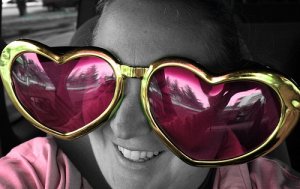- Joined
- Nov 3, 2009
- Messages
- 7,589
I always had very sharp eyesight that comes with being naturally far-sighted. What was a blessing in my younger years turned into a hazard. My eyesight is probably +1.5 to +2 and I should wear eyeglasses but often forget to put them on.
Here is an interesting phenomena I have noticed: when I have my glasses on, my gems appear brighter and more colorful. What is it? At first, I thought, OK, the alex is almost emerald cut and obviously optically enlarging the facets makes color shift more noticeable. But what about other rings? My ruby looks crisper, too.
Does it have to do with the light being refracted three times, at the lens front surface, at the back, and then the eye? Or something else is going on?
The main reason I am asking this question is because we loupe the stones and the loupe works as eyeglasses. I wonder if colors look slightly different under a loupe. Also, could different people perceive colors in a different way because of their vision?
Here is an interesting phenomena I have noticed: when I have my glasses on, my gems appear brighter and more colorful. What is it? At first, I thought, OK, the alex is almost emerald cut and obviously optically enlarging the facets makes color shift more noticeable. But what about other rings? My ruby looks crisper, too.
Does it have to do with the light being refracted three times, at the lens front surface, at the back, and then the eye? Or something else is going on?
The main reason I am asking this question is because we loupe the stones and the loupe works as eyeglasses. I wonder if colors look slightly different under a loupe. Also, could different people perceive colors in a different way because of their vision?





300x240.png)